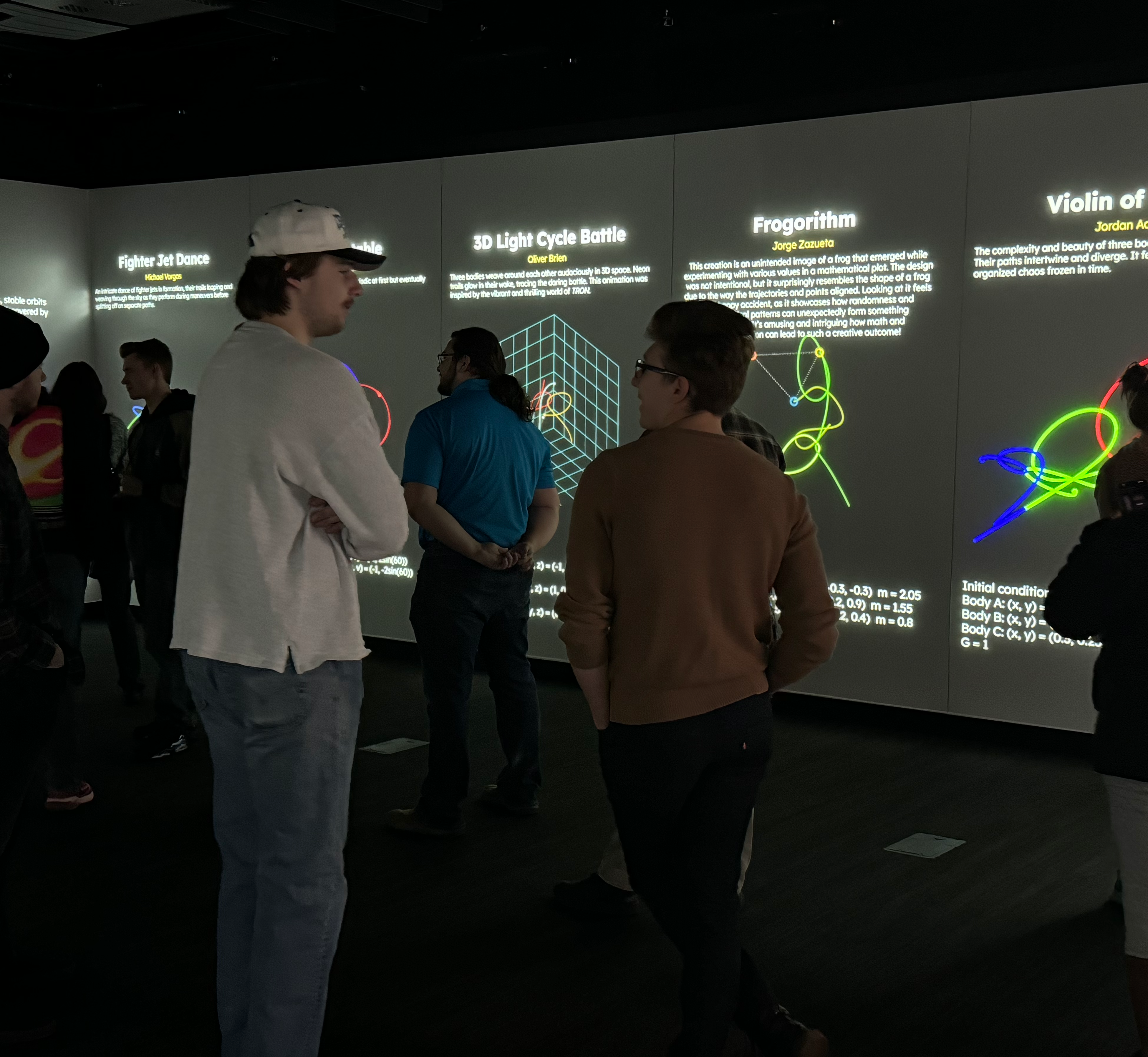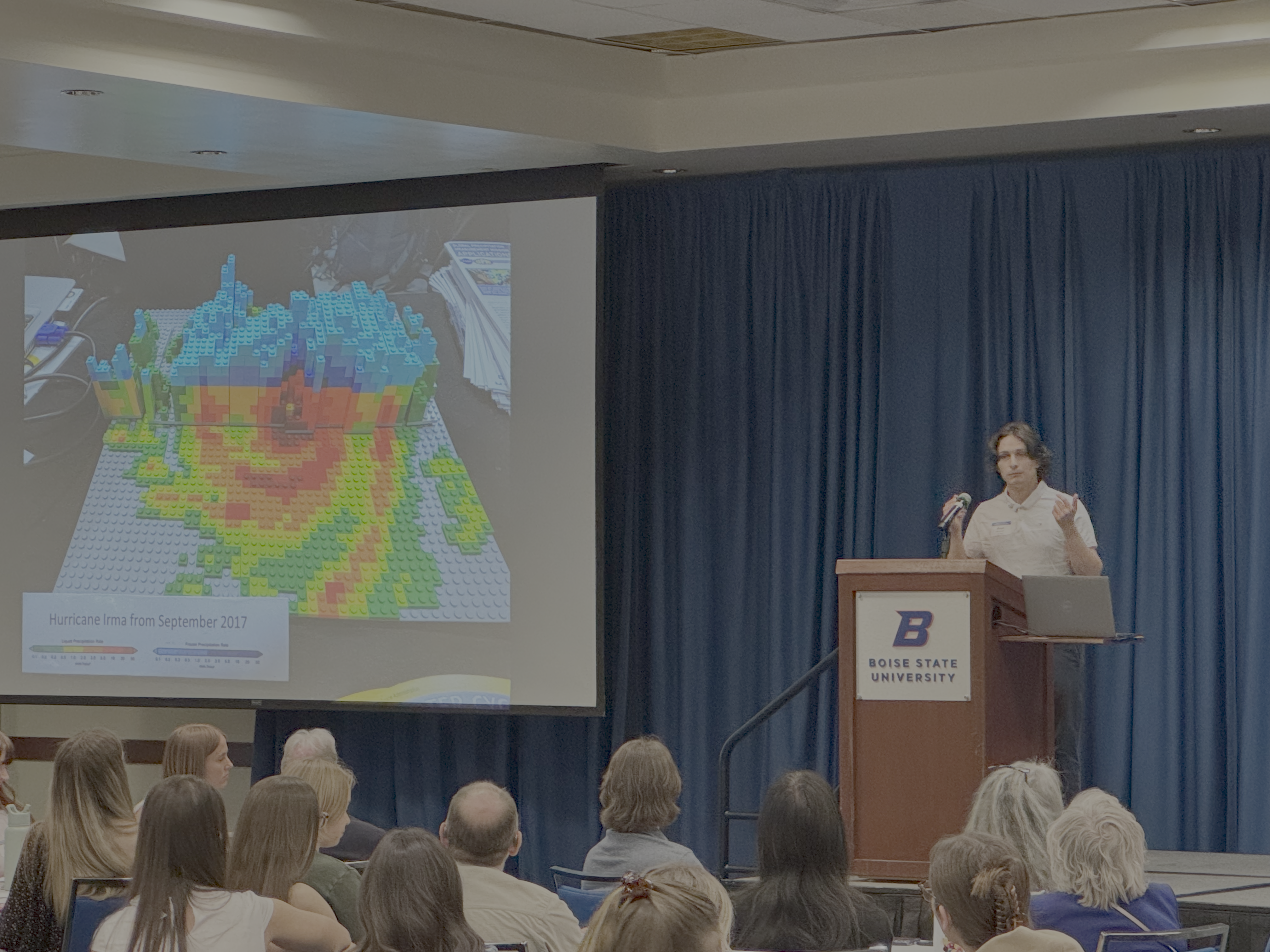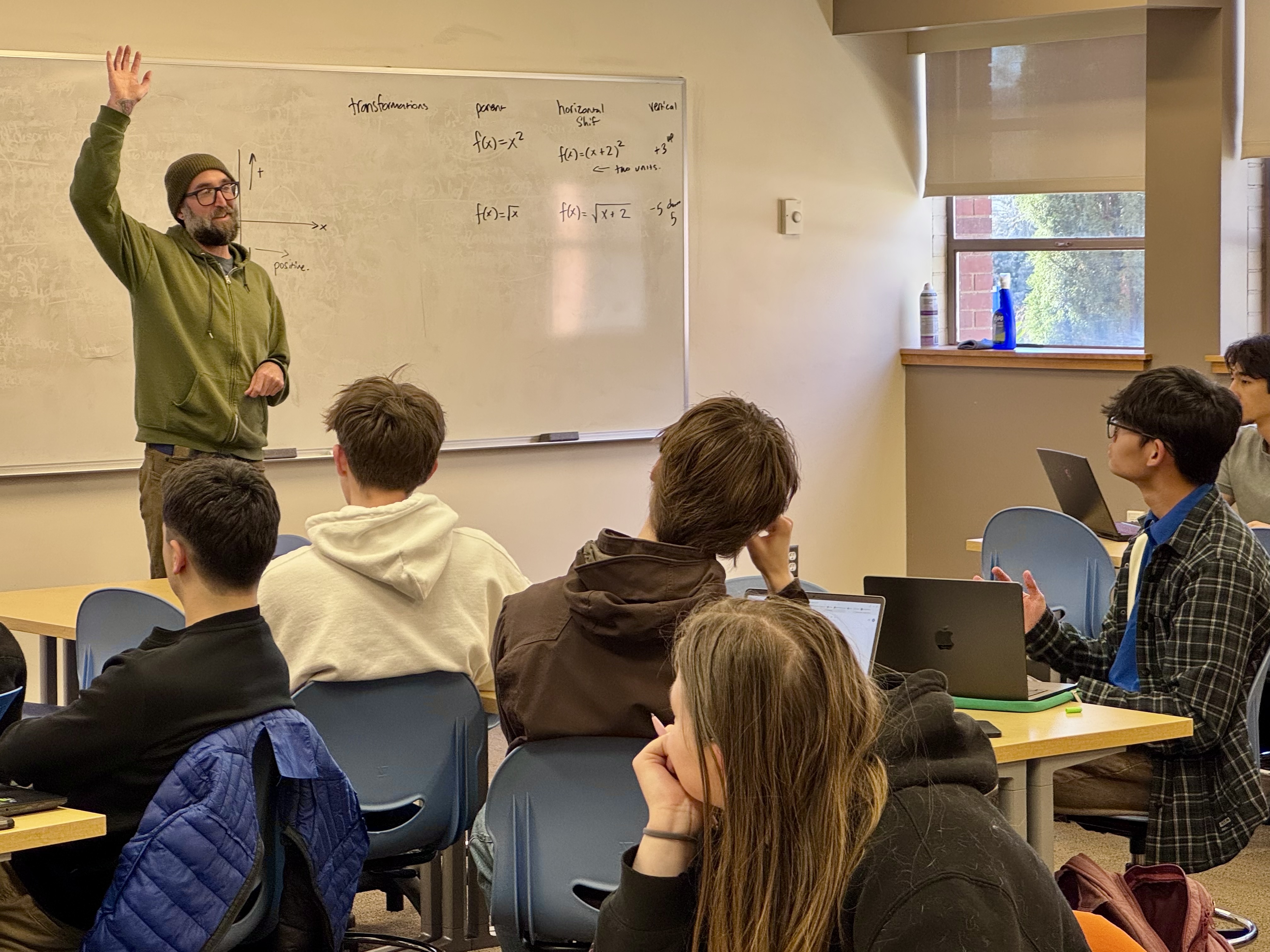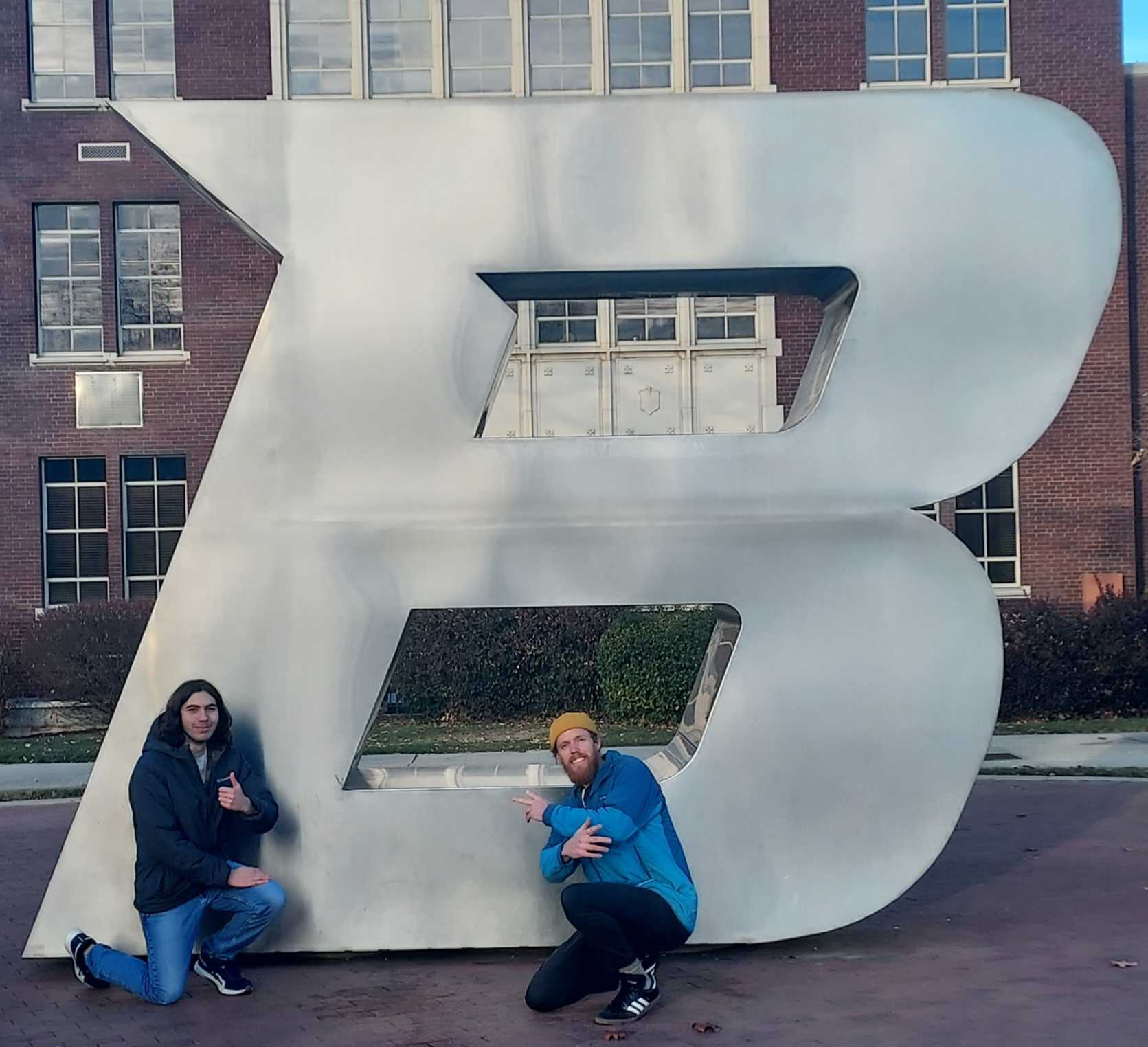This semester, I had the privilege of guiding my MATH 365: Introduction to Computational Mathematics students through an incredible journey—one that combined numerical analysis, artistic creativity, and the timeless intrigue of the Three-Body Problem. The result? A breathtaking Mathematical Art Exhibition at Bose States Luminary, where their work was celebrated by students, faculty, and community members alike.
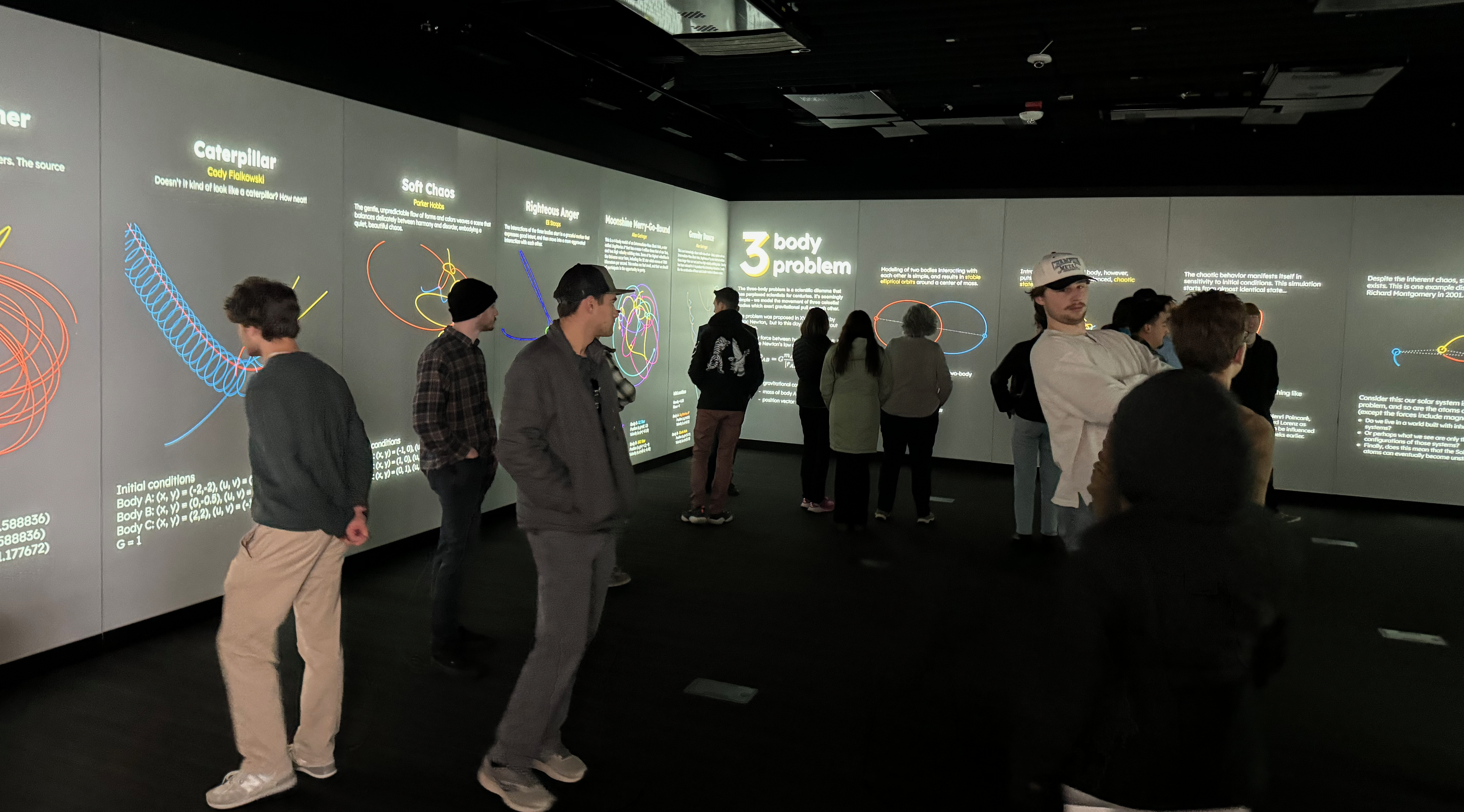 Mathematical explorations in the Luminary
Mathematical explorations in the Luminary
Mathematical Art
The three-body problem, with its chaotic and unpredictable gravitational interactions, is a classic challenge in mathematics and physics. In our course, we developed numerical solvers for differential equations to approximate the motion of these three bodies. But we didn’t stop there. My students took the results of their computations—those intricate trajectories—and turned them into dynamic art.
 Math interactions in an arts space
Math interactions in an arts space
I was thrilled to see them breathe life into the mathematics. They plotted the celestial orbits, transforming them into stunning visualizations that ranged from glowing, interwoven paths to mesmerizing animations. The beauty of the three-body problem lies in its chaos, and yet, when visualized, it reveals a surprising elegance.
Math taught differently
 Math is strong with the young ones
Math is strong with the young ones
The exhibition also served as an engaging community outreach event, drawing a diverse audience from beyond the university. Homeschooled children and their families explored the visualizations, sparking curiosity about the connections between math, physics, and art. Parents with small children marveled at the colorful, dynamic plots, introducing their little ones to the wonders of mathematics in a way that was both accessible and inspiring. The families of my students attended as well, sharing in the pride and excitement of seeing their loved ones’ work showcased. It was heartwarming to witness how the exhibition brought together people of all ages, fostering a shared appreciation for the beauty and creativity inherent in mathematics.

